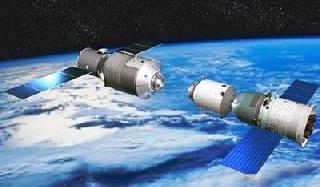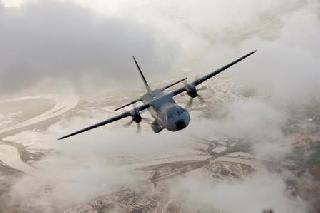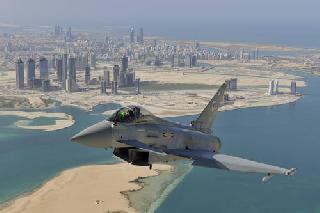
Artistic illustration of Tiangong 1 and Shenzhou capsule in orbit. A file photo.
BEIJING (PTI): China has put off its plan to send a manned mission this year to experiment space rendezvous and docking mission.
Instead an unmanned space craft would be sent to follow up last year's successful experiment of space docking, official media here reported Thursday.
Plans are afoot to launch the unmanned "Shenzhou 9" spacecraft in June 2012, to complete space rendezvous and docking missions with the Tiangong-1 space lab module currently orbiting the earth, the China Aerospace Science and Technology Corporation said.
The launch of the manned Shenzhou 10 will be delayed until next year according to the latest schedule, the report said.
Last October on the eve of the launch of Shenzhou 8, the spokeswoman for China's space program, Wu Ping, had said that they would send two more such missions in 2012.
"According to the mission plans, at least one of the two flights next year will be manned," Wu said.
There was also speculation that China may send a woman astronaut as a team of astronauts currently being trained included some women.
The reasons for postponement of manned flight were not specified. The flights were part of efforts by China to establish its own space station, on the lines of Russian station Mir de-orbited in March 2001.
Compared to that, the Chinese version, which was expected to be ready by 2020, is smaller in size.
China started its three-stage manned space programme in 1992. In the first stage the country sent the astronaut, it's first, Yang Liwei, into space as part of the Shenzhou-5 mission in 2003.
Also as part of the initial stage, two astronauts conducted extravehicular activities during the Shenzhou-7 mission in 2008. During the second stage China is focusing on space docking.
Zhu Yilin, a researcher from the China Academy of Space Technology, said Shenzhou 9 will perform similar tasks to that of its predecessor, Shenzhou 8, which was launched last year.
In addition, Shenzhou 9 will also carry seeds and animals into space in order to conduct experiments. Early this month China published a set of lunar images claiming to be the "world's highest resolution" pictures taken by its second moon orbiter, Chang'e-2.
The pictures included a set of full coverage map of the Moon and its images with a resolution of seven meters captured by Chang'e-2, currently in orbit.
 Previous Article
Previous Article Next Article
Next Article












The Indian Air Force, in its flight trials evaluation report submitted before the Defence Ministry l..
view articleAn insight into the Medium Multi-Role Combat Aircraft competition...
view articleSky enthusiasts can now spot the International Space Station (ISS) commanded by Indian-American astr..
view article